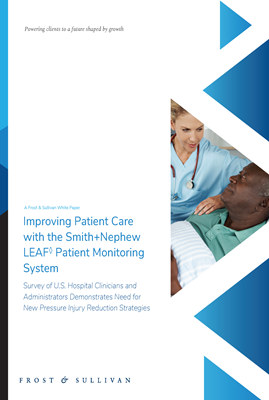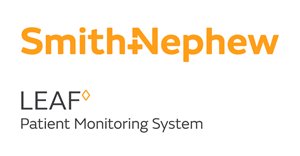Improving Patient Care with an Automated Patient Monitoring System
Recent reports from the Agency for Healthcare Research and Quality indicate that, while the incidence of many other hospital-acquired conditions is falling, the incidence of hospital acquired pressure injuries (HAPIs) has grown by 6%,1 while estimates calculate pressure injuries across all care settings as costing the U.S. health care system $9.9 billion2 to $11 billion3 per year. Many underlying factors contribute to the development of these injuries, but one of the most common is inadequate patient repositioning to offload pressure from high-risk anatomical locations.4
In partnership with Smith+Nephew, Frost & Sullivan conducted 20 in-depth interviews with a wide range of U.S. hospital clinicians, administrators and other healthcare professionals to explore their experience managing HAPIs as well as their opinions on a new sensor-based monitoring system for the prevention of pressure injuries.
Download now to learn more!

1. AHRQ National Scorecard on Hospital-Acquired Conditions Updated Baseline Rates and Preliminary Results 2014–2017.
2. Rogers M. Reducing Hospital-Acquired Pressure Injuries (HAPI) in Long-term Acute Care with Turn Cueing Technology. Presented at AONL Virtual Symposium. Sept. 24, 2020.
3. https://www.centerfortransforminghealthcare.org/improvement-topics/hospital-acquiredpressure-ulcers-prevention/. Accessed Nov. 1, 2020.
4. Pickham D, Berte N, Pihulic M, Valdez A, Barbara M, Desai M. Effect of a wearable patient sensor on care delivery for preventing pressure injuries in acutely ill adults: A pragmatic randomized clinical trial (LS-HAPI study). Int J Nurs Stud. 2018; 80,12-19.
Sponsored by:

DOWNLOAD NOW FOR FREE!
Which of the following best describes your position level?
By downloading this resource, I agree to sign up to receive newsletters and special offers from HealthLeaders and the sponsor. I understand that I can opt-out at any time. Privacy policy.